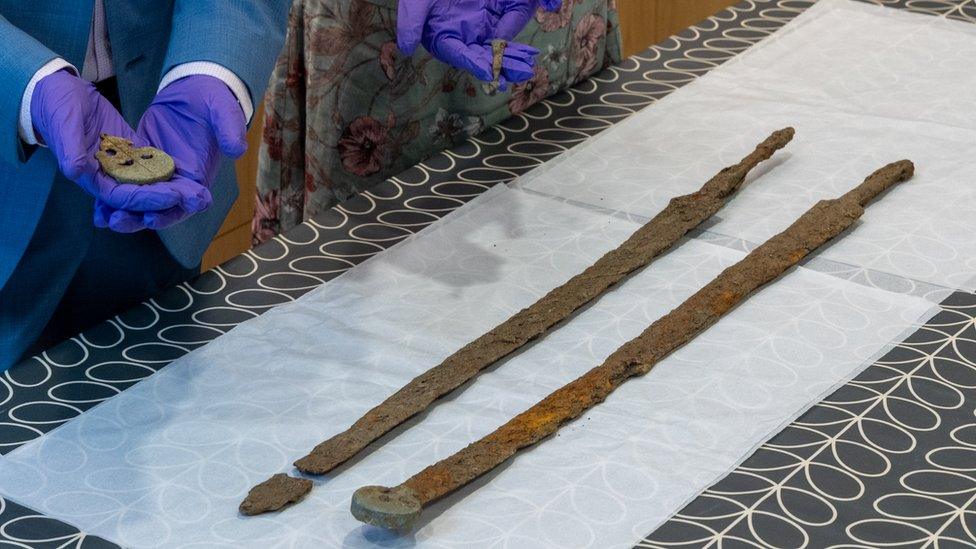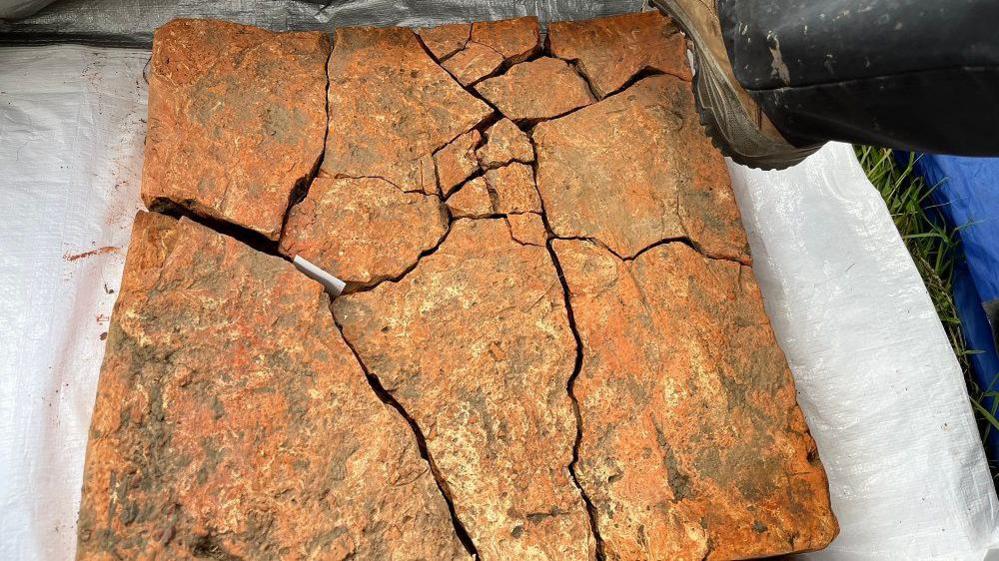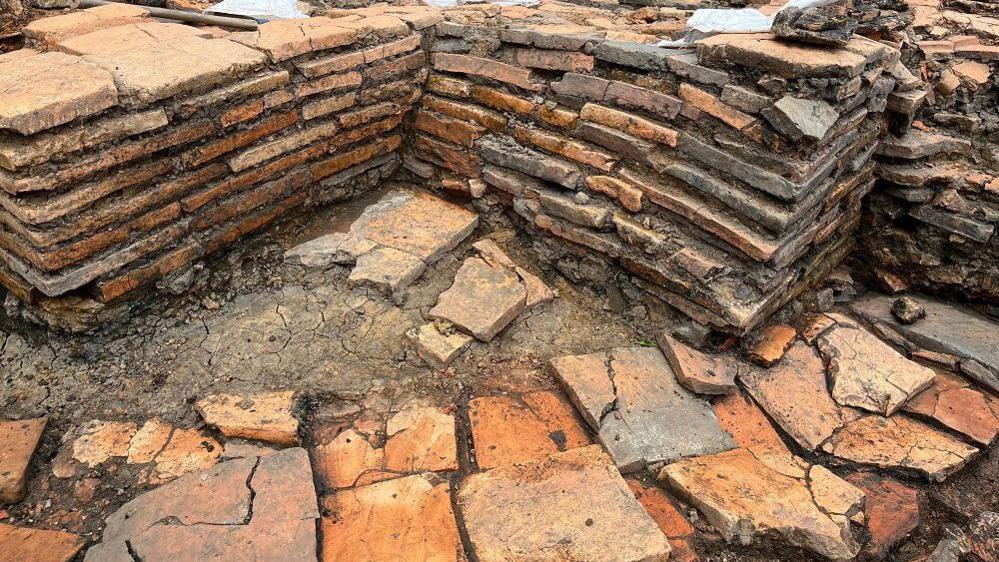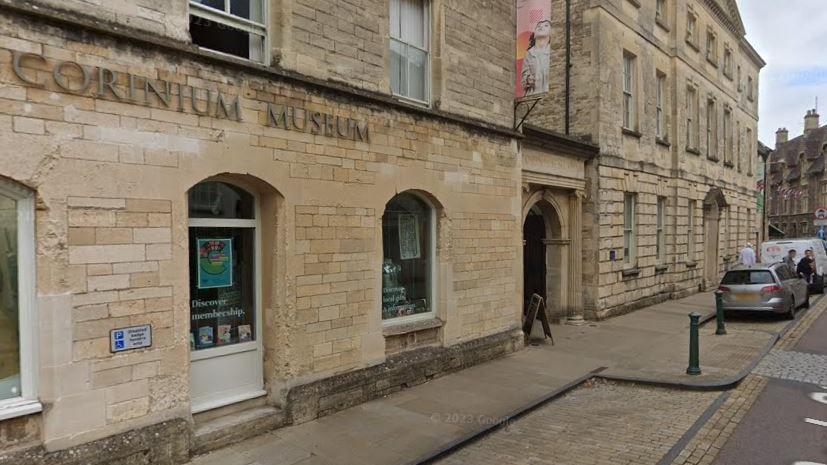'Amazing discovery' that helped build Roman Britain
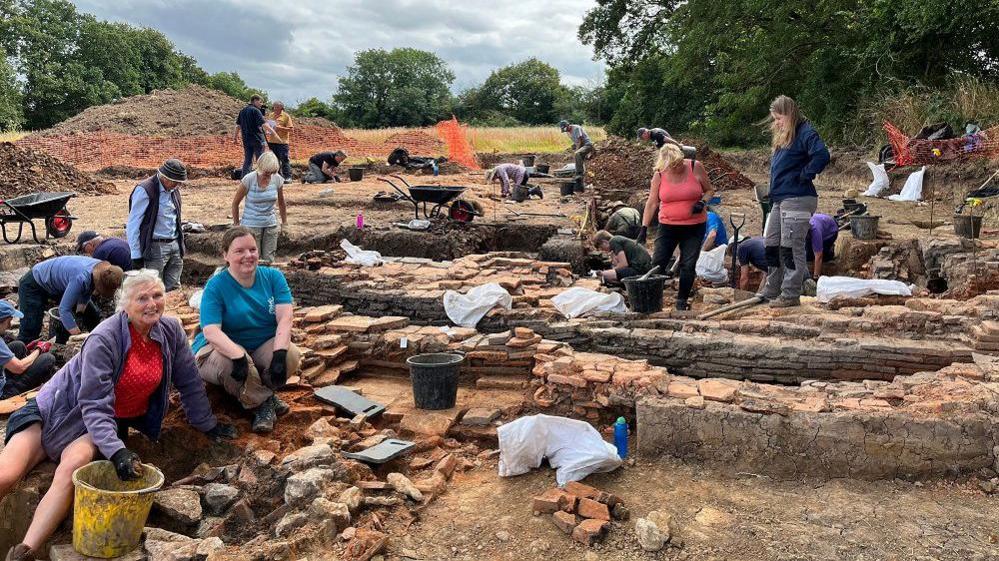
Image caption, As well as professional archaeologists on site, there are around 25 to 30 volunteers a day there
1 of 5
- Published
The site of a kiln that was used in the building of Roman Britain's second-largest town is being excavated.
Archaeologists and volunteers have spent some of the past three years working to uncover more of the kiln, which they have said was used to build Cirencester, in Gloucestershire, and other places.
Tiles from the site at Brandier, a tiny hamlet near Minety in Wiltshire, have markings found on artefacts over a large area - as far as Old Sarum, near Hereford, the Cotswolds and Reading.
The owners of the site hope to open it up to the public.

Neil Holbrook, the CEO of Cotswold Archaeology, called it an "amazing discovery"
Bits of tile had been found on the top of the field where the dig is happening.
Neil Holbrook - CEO of Cotswold Archaeology which is running the dig - explained that 200 years ago an expert found a stamped tile in a Roman villa near Cirencester, saw the letters stamped on it and wondered where it came from.
Now the site, which he described as what would have been a "major regional industry" for creating Roman buildings, is being excavated.
"We had hoped we might find something here, but we had no idea we would. It's absolutely exceeded all expectations," he added.
"This is an amazing discovery."
Only 10 to 20cm of topsoil had to be taken off for the team to uncover the structure.
Anton Beechey, also from Cotswold Archaeology and site manager, said: "Most of what we see here would have been underground, and above would have been the firing chambers."
He said the kiln would have been in use for about 150 years until stone tiles became more popular.
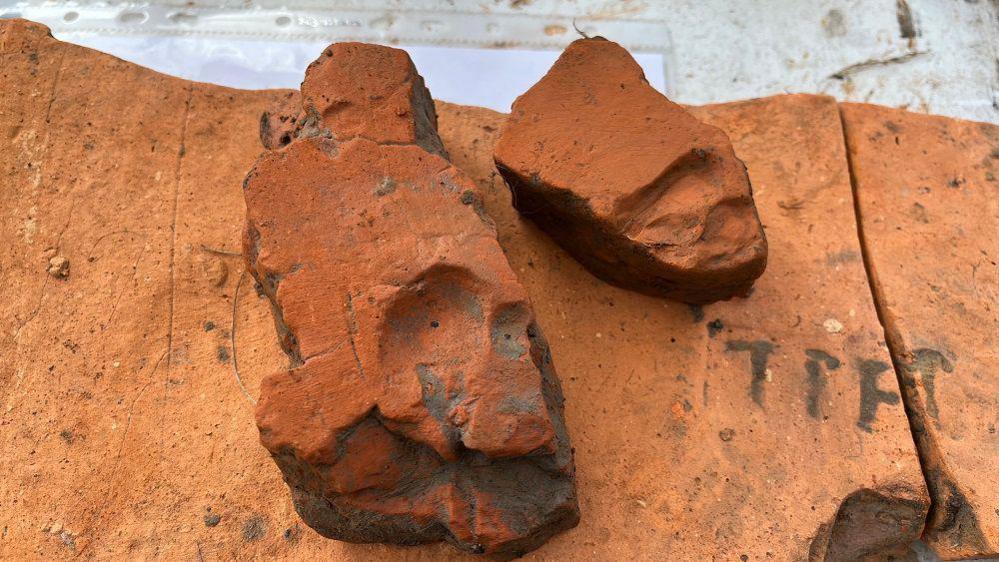
Tiles were often rejected because animals or children would walk on them
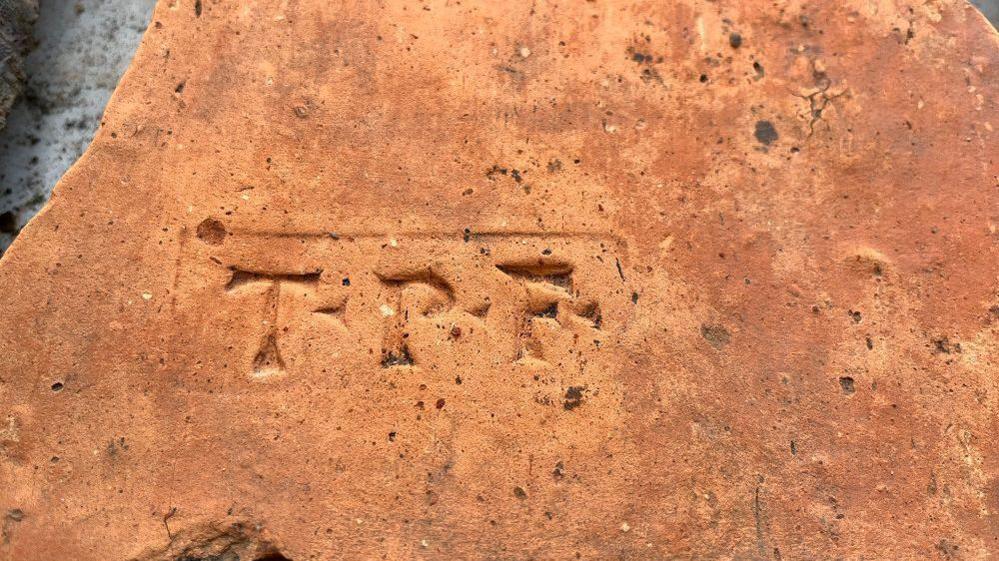
Many of the stamped tiles have "TPF" which is believed to be the mark of the public tile works for Cirencester (or Corinium as it was then)
The tiles being found are generally rejects from the time, and other waste material from the kiln which Mr Holbrook said would have been a "bit like a pizza oven".
One tile was huge, weighing 25.5kg. Some seem to have been rejected because animals or children had left footprints on them.
Peter Warry - an expert on Roman tiles - has been at the dig.
He said: "They are very well made. A lot of the stuff you see is for hypocausts for things like heated floors and baths."
He explained there are six different stamps - many starting with "TPF" which he believes - in Latin - would stand for "made in the public tile works."
"This would be the municipal tile works for Cirencester" he added.
Each tile would have been handmade, with the first bit of the process being the basic shape cut out, then smoothed down.
"Every one of these tiles has been made by a roman hand smoothing it down," added Mr Warry.
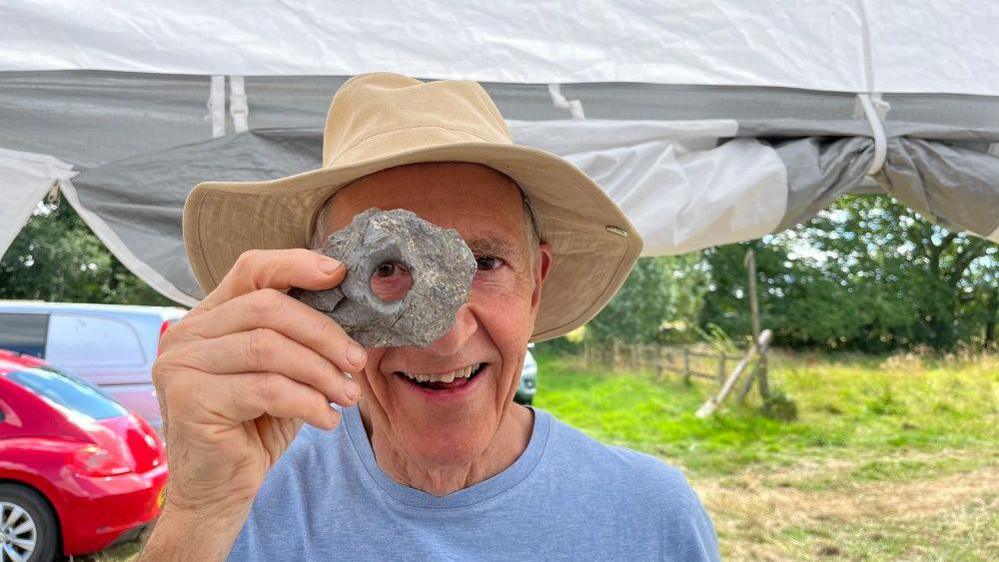
Peter Warry - an expert in Roman tiles - explained that a "spyhole" would be in the roof of a kiln to check on the tiles
Tiles are not the only artefact found there - Mr Warry pointed out something known as a "spyhole".
It would have been embedded in the roof of the kiln so workers would check on how the tiles were progressing.
One noticeable thing in the excavations are lots of roof tiles lined up along the floor, almost like a pipe.
CEO Mr Holbrook said this is rare, and was probably down to the British weather.
"It was incredibly wet. They built lots of drains - I've never seen anything like this. They've had to fabricate these drains out of semi-circular tiles, designed to be on a roof. They've re-used the products.
"The last thing you want is water getting into your kiln, it would put the fire out."
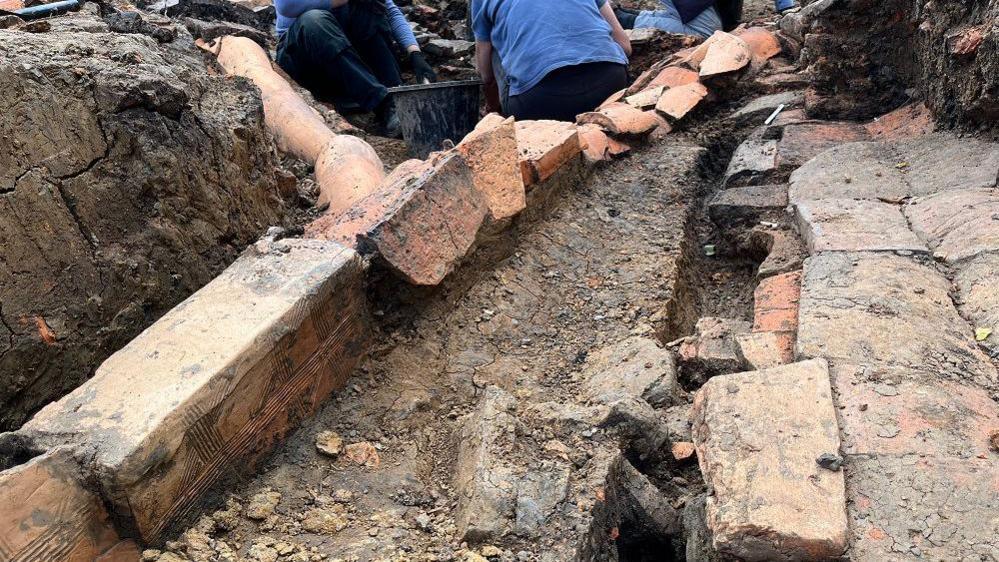
The wet British weather led to tiles being used to create ways to drain the area
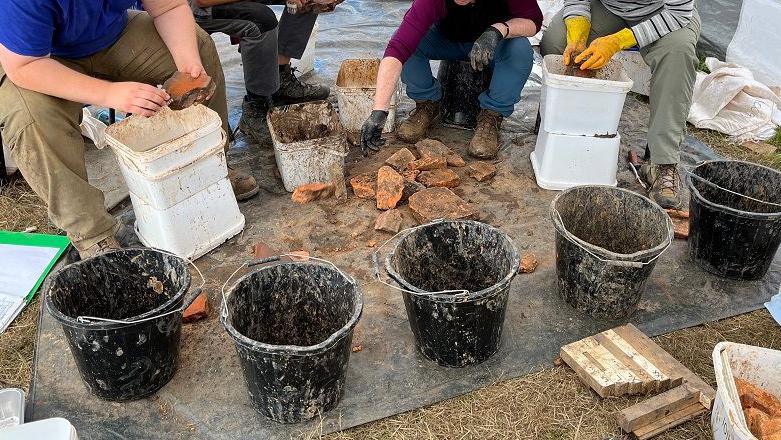
Volunteers have been washing finds too
The dig has been popular among local people, with around 25 volunteers a day helping with the excavations, and another group cleaning the finds.
Penny, who lives close to the site and has been involved in each of the last three years, said: "There's a footpath I've walked at the top of this field for years and had no idea this was here."
Another local, Gill, said: "It's fantastic to think that 1,800 years ago this was a thriving kiln, and presumably a thriving community."
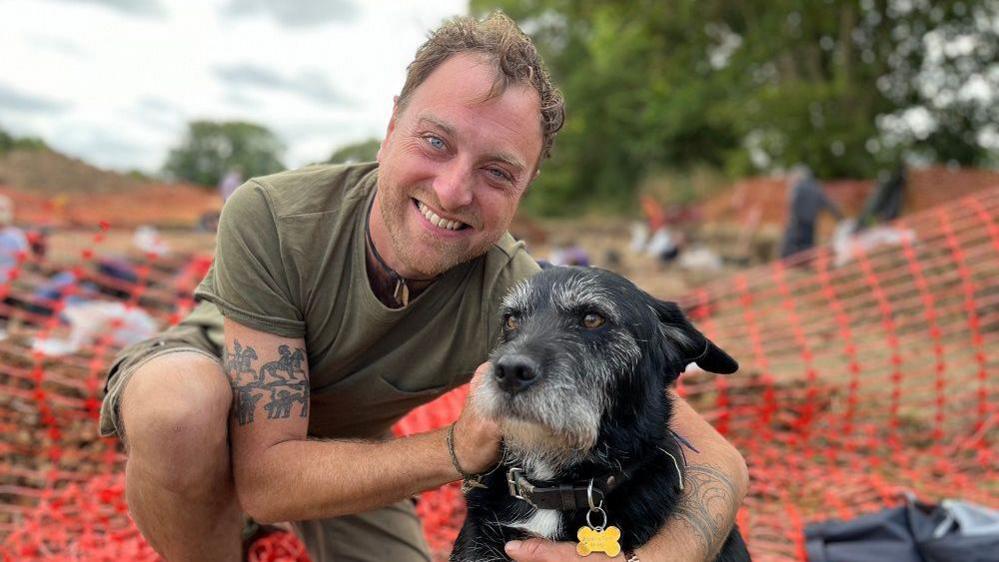
Oliver Lavery is a member of the family that owns the land - and has a dog called Nero, like the Roman emperor.
Oliver Lavery is part of the family that owns the land.
They are applying for National Lottery funding to see if public activity days can be held there in the future.
He remembers there always being something odd about the field.
"Ever since we moved here there was a mound here. We would find clay in the hedgerows," he said.
Get in touch
Tell us which stories we should cover in Wiltshire
Follow BBC Wiltshire on Facebook, external, X, external and Instagram, external. Send your story ideas to us on email or via WhatsApp on 0800 313 4630.
- Published11 May 2024
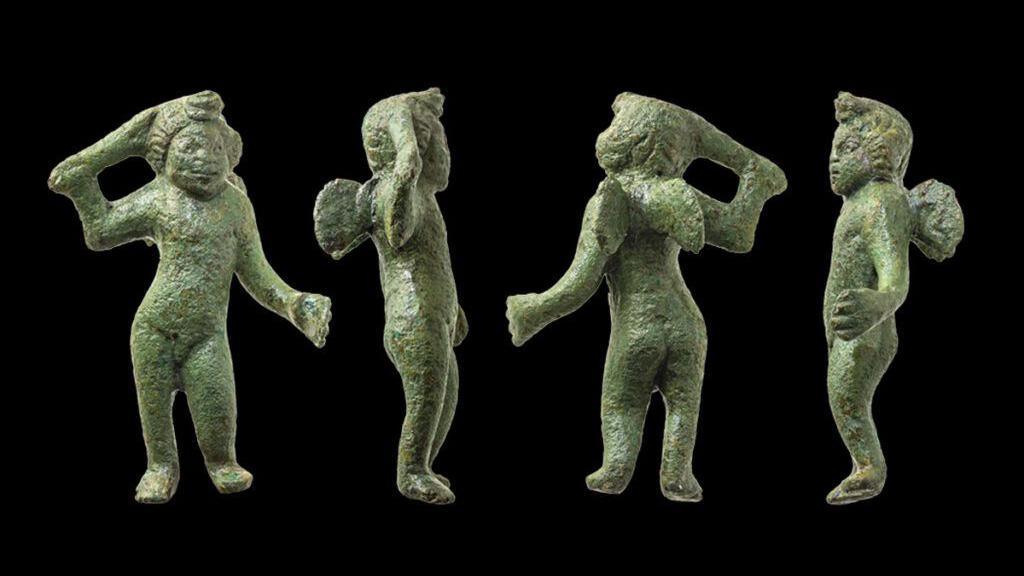
- Published23 February 2024
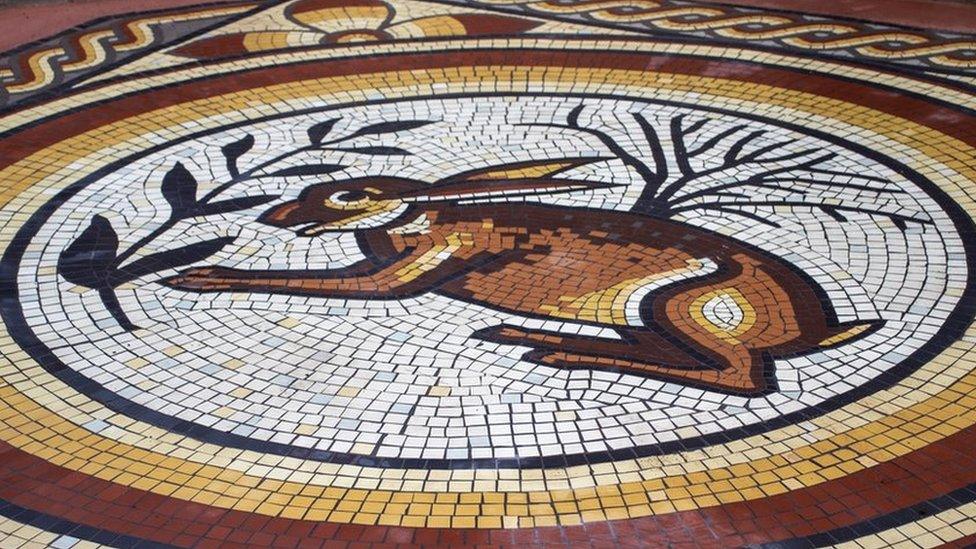
- Published20 October 2023
